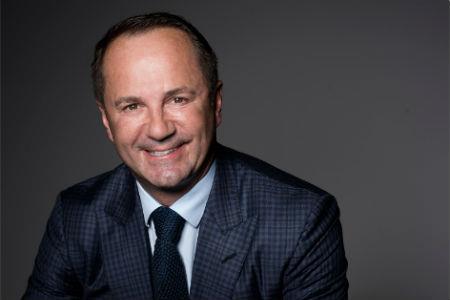Ed’s group chief innovation officer tells how he’ll turn the technology buzz into productive reality

Recently appointed group chief innovation officer Peter Hacker talked to Global Reinsurance about risk awareness, the firm’s Insurance Innovation Academy and the three major innovations the (re)insurance industry should be exploring.
Why is the role of group chief innovation officer at Ed an exciting one?
The combination of strategic and operational delivery have always been at the core of my heart of thinking.
What is really essential in this particular development [of the (re)insurance industry] is that we combine strategic advice related to risk and operational execution – I see this as a complementary opportunity.
With regard to innovation, what do you hope to achieve at Ed in the next short, medium, and long-term?
The number one thing we want to achieve at Ed is risk awareness, with the client at the centre of this. If we use a part of our innovation project as an example, cybercrime and security for instance, it’s all about getting a better understanding of the specific risk to the client, and providing technology developments. At the end of the day, it is an innovation drive providing new mechanisms, solutions and tools to clients. That is the core of Ed’s innovation approach.
Do you have any specific projects in the pipeline?
In September, Ed launched the Insurance Innovation Academy. The Academy has started with a specific focus on broader intangible risk, including cyber risk. We are developing this for our colleagues, but also for our clients and our partners. The concept of the Academy will very much range from risk identification, to the evaluation of the particular risk and transfer of the risk. It will also include claims specific issues related to the application of insurance technology, such as getting a better understanding of artificial intelligence, the Internet of Things, and other disruptors. It’s very unique.
How should the reinsurance industry go about utilising InsurTech?
We are, in our industry, at the beginning of what I call a new age. It is beginning a lot slower than I expected, however, considering on some of the disruptors we are seeing coming into the field.
The insurance market has certain tight regulations, and is hindered to a certain degree. We should move away from a rather inefficient claims handling process into a more efficient claims handling process being used by blockchain technology – this is what I consider required development. But, we also have to be reminded that the nature and particularity of an underwriting process, the current platform, is arbitrarily driven for certain types of work.
Big data is one of the innovations we at Ed are keen to explore. How can you make sure risks are better priced? How can you look at better risk behaviour developments?
Cyber in itself is an emerging risk, but it is an area which big data will help massively, because it will help more accurately price the risk, and more importantly create records of a wider range of risks allowing customers and risk managers and boards to make more accurate and more informed decisions.
If we go a step further and introduce the Internet of Things, then we’re talking about data in real time. We’re talking about the implications on health and lifestyles.
It’s all about efficiency at the end of the day. Again, innovations like blockchain technology will lead to a data age for insurance, leading to lower costs potentially, and more efficient distribution platform.
What are the top three innovations the (re) insurance industry should be exploring?
From my point of view, the three major ones are definitely artificial intelligence, blockchain technology, and Internet of Things. They impact on the way we understand, evaluate, qualify, quantify, and structure risk, as well as how we potentially trade and distribute it. I think it’s really about in one way how we look at disruptive technologies and how we as an industry respond to these disruptive technologies with new platforms.
Can the industry afford to ignore these changes and innovations?
We are in an unparalleled age with an unparalleled interconnectivity of data. The demand for innovation has never been bigger and more essential than it is right now. Ignoring such a fact means not only disintermediation but also potential irrelevance triggered by the entrance of new generation disruptors.
Just look at the development of computer technology for instance. In 2014, a computer for the first time, past the Turing Test – the test to verify the existence of artificial intelligence. The speed of development is so dynamic at that moment. I call it the second half of the chess board; a phrase I use to describe exponential growth. Today’s innovations and development will certainly have a big impact on the insurance industry. Some within the insurance industry may believe that the blockchain mechanism will have a lesser impact on the sector today than it will have on the banking industry, however it will indeed come to the insurance industry and we better start preparing sooner than later. An outside entity could push into this field and make part of our business obsolete.







No comments yet